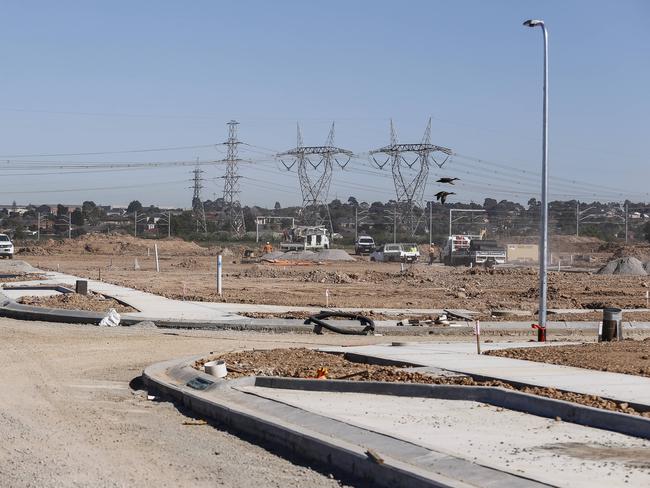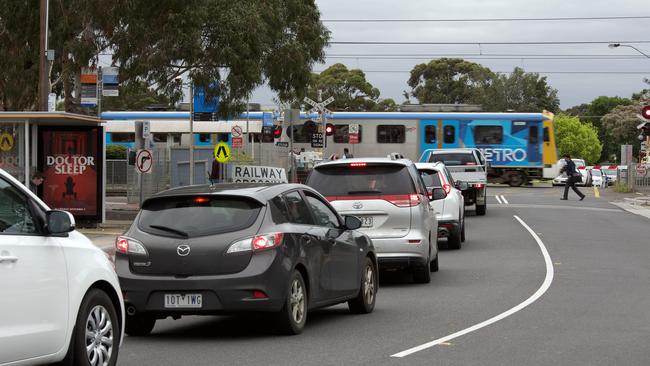Homeowners in Casey slam mass development projects
Casey in Melbourne’s southeast - already home to more than 340,000 people - is one of Australia’s fastest growing areas. But some residents fear it’s being turned into a “slum” with traffic congestion and overcrowding getting worse. This is why they’re angry.

South East
Don't miss out on the headlines from South East . Followed categories will be added to My News.
Two huge new housing estates in Casey have angered neighbours and experts who say the area has inadequate infrastructure and transport links to accommodate the growth.
The partially built Casey Green on Centre Rd in Narre Warren and the planned Horizon estate on Pound Rd in Hampton Park are accessed by just two already busy main roads.
Hampton Park resident Heather Pasnin said she was “dumbfounded” the estates had been approved by Casey Council, despite a lack of infrastructure in the area.
“Casey’s mass development is making residents feel boxed-in like sardines – it’s becoming a slum – like a third-world country,” she said.
LIVE IN CASEY? WHAT’S YOUR VIEW? SCROLL DOWN TO LEAVE A COMMENT
Both new estates are within a few kilometres of the Webb St level crossing which can see traffic backed up along Webb St towards Pound Rd and in the other direction right to the Princes Highway.
Ms Pasnin said it was “absolutely crazy” the crossing wasn’t a removal priority and feared the new housing developments would bring extra congestion.
“You can be waiting at least a half an hour at the Webb St crossing – I can’t even imagine how the area will cope once all the houses are built.”

University of Melbourne urban planning expert Professor Brendan Gleeson said it was time to put a stop on redeveloping farmland for residential purposes.
“We shouldn’t be doing it at all – anything that has valuable or productive soil shouldn’t be redeveloped at all,” Prof Gleeson said.
He said councils needed to stop approving large land releases without having the appropriate infrastructure in place.
“When developing does happen, whether its on greenfields or not, there has to be commensurate infrastructure in every instance from social and education to physical and transport infrastructure.”
While the rapid expansion of large swathes of the southeast is putting ever-increasing pressure on often gridlocked roads, Casey Council Mayor Susan Serey said the council was fighting for State Government finance for road duplications, including a request for $130 million to undertake the duplication of Pound and Shrives roads from Hallam Rd through to Narre Warren-Cranbourne Rd where the new houses are being built.
Cr Serey said as the city continued to expand and mature, the council faced a range of challenges to provide the services and infrastructure communities needed and deserved.
“We know that there is heavy traffic along sections of Pound Rd and Shrives Rd in Narre Warren/Hampton Park,” Cr Serey said.

They were also pushing for the deviation of Fullard Rd and the upgrade of the Webb St and Shrives Road intersection, she said.
“In order to support our growing community, we support the development of these new estates and will continue to advocate to the state and federal governments to support our growing city by providing adequate road upgrades and infrastructure.”
Casey Green Estate will contain about 800 three- and four-bedroom townhouses and apartments.
Casey Council is also pushing for the removal of the Webb St level crossing.
A State Government spokeswoman said several factors were considered when prioritising level crossings for removal.
Public Transport Users Association spokesman Daniel Bowen said it would make sense to have Webb St on the State Government’s removal list.
He said getting rid of the crossings helps cut delays for buses, cyclists, pedestrians and motorists, helps improve safety, and enables more frequent trains to run.
“If locations like the Webb St crossing can’t be included in the current removals list, it would make sense for the upgrades to continue in an ongoing rolling program, to ensure more communities benefit,” Mr Bowen said.
MORE:
FIRE FUNDRAISERS: PRAHRAN MARKET, MT DANDENONG HOTEL
LOST DOG PROMPTS FIREWORK WARNING
TRUCKERS IN FAMILY AFFRAY OVER PARKING SPOT
“As Melbourne’s suburbs continue to develop, with more people moving into established areas, and increased pressure on road and rail infrastructure, we hope the State Government recognises the need for more level crossings to be removed.”
A State Government spokeswoman said “a number of factors” were considered when prioritising level crossings for removal.
These included safety, congestion, situations where level crossings divide communities and restrict access to local facilities and the efficiency in removing crossings together.
Casey’s population is 356,555 and is forecast to grow to 549,190 by 2041.
